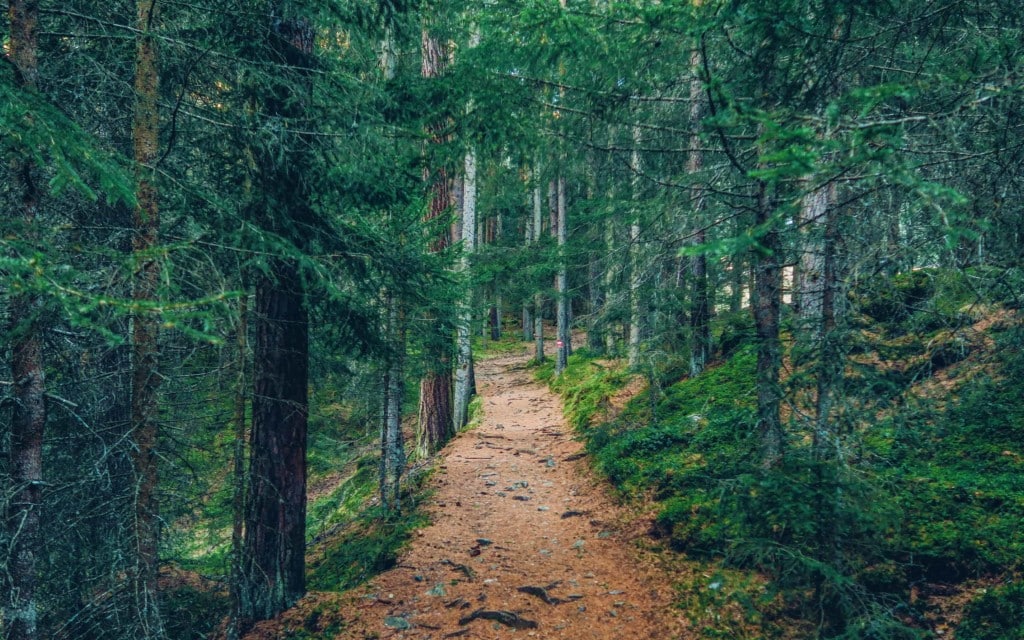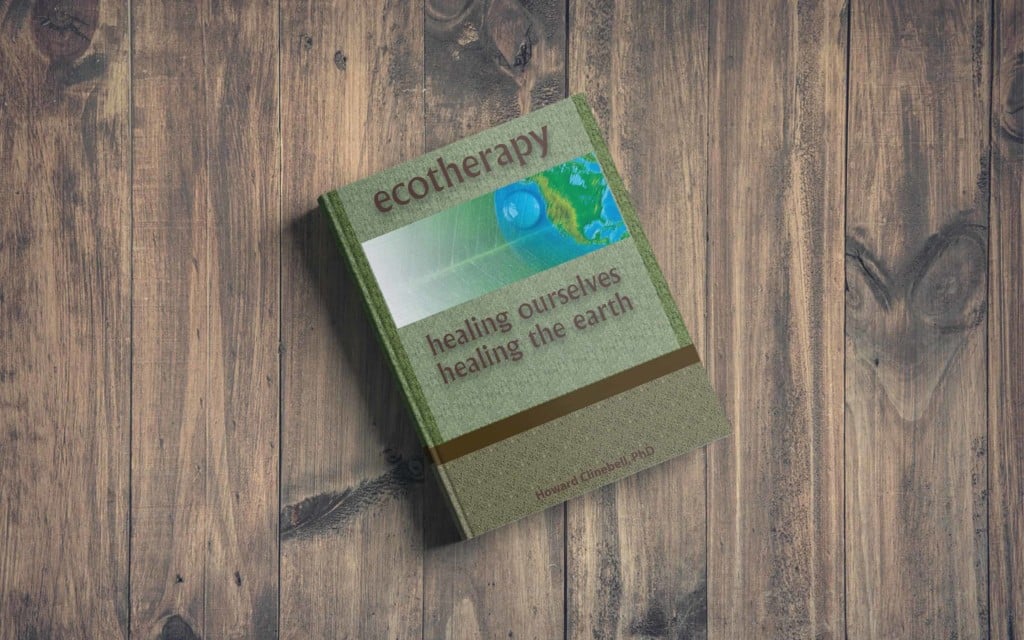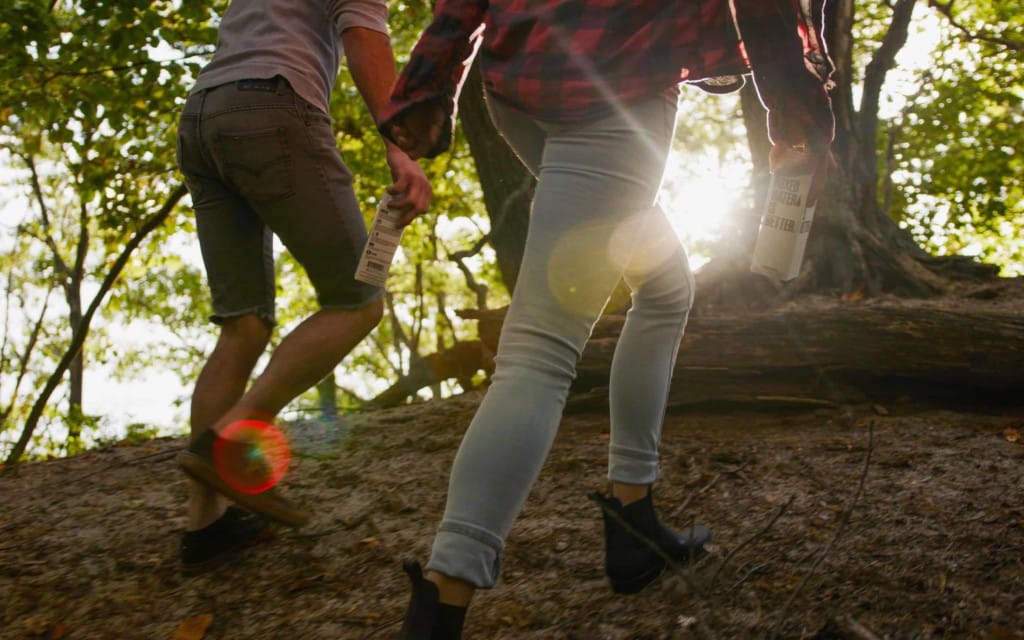Forests are an incredible resource, but they’re also something we take for granted.
More than just a beautiful space, or an amazing photo opportunity, natural green spaces give us everything we need to thrive on this fantastic planet. Forests produce oxygen, purify our water, and cleanse the air we breathe each day.
Not only that, but these beautiful locations can also provide shelter, food, clothing, and a host of the materials we rely on every day too.
Now, scientists are starting to learn more about just how valuable forests are for our health and wellbeing. Studies suggest that forest bathing or forest walking could be the key to unlocking inner peace, easing our troubled minds, and even overcoming common issues like insomnia.
Nature bathing or forest meditation is a unique process that involves getting back to nature so we can restore the energy and vitality that drains from us during day-to-day life.
As more people continue to live in cities, surrounded by walls and electronics, we’re entering an age where almost everyone has some form of “nature deficit“.
In other words, we’re not spending as much time with good old mother nature as we should be.
Forest bathing aims to overcome this issue by reminding us to appreciate the world around us in a more mindful way. The best part? You don’t need a loofah or any special equipment to go forest bathing. All you need is the right location, and the freedom to explore.

What is forest bathing? Taking a dip into forest meditation
Before we explore the benefits of forest bathing for health and sleep, let’s get a better understanding of what this process actually is.
The term “forest bathing” or tree bathing comes from Japan — a country that’s both heavily forested and highly urbanized.
While trees cover around two-thirds of Japan’s landmass, the majority of the country’s citizens live in highly crowded city conditions.
Otherwise known as Shinrin-Yoku, forest bathing offers the residents of Japan a way to break free from the brick and mortar prisons they find themselves in.
Forest bathing mindfulness involves more than just walking through a wooded area. The people who practice this process actively take in the atmosphere around them, using all of their senses to fully immerse themselves in nature.
Japan actually launched a national programme in 1982 to encourage more people to get involved with nature. In 2004, a formal study of the link between human health and green spaces also began in Iiyama in Japan.
Today, more than 2.5 million people take time out every now and again to engage in their own sessions of forest therapy, enhancing their health and wellness in the process.
However, while the Japanese might be on the right track with forest bathing and mental health, the rest of the world is still suffering.
Never before has our planet been so far from its connection with the natural world. Around 66% of the world’s population is expected to be living in cities by 2050. Additionally, the average American spend around 93% of their life indoors.
We’re shutting the natural world out, and it’s harming both our health and our sleep patterns.
The good news? A quick forest bath could be enough to help people all around the globe to unplug from technology and slow down for a while.
One study conducted by the King’s College in London found that exposure to the sky, trees, and birdsong has a positive impact on wellbeing.
As little as 20 minutes can make a difference, though most experts recommend aiming for about 10 hours a month instead.
The more time you can spend in the great outdoors, soaking up all the benefits that fresh air and beautiful scenery has to offer, the greater your results will be.

Who invented forest bathing? The origin story
The term “ecotherapy”, used to refer to the Japanese process of forest walking, was originally coined by a man named Howard Clinebell in 1996.
What’s more, in April 2018, a doctor from the Nippon Medical School in Japan published a book of forest bathing research, created from 25 years of study into the topic.
Though we’re not entirely sure who invented forest bathing, we do know that the practice began in Japan. We also know that the Japanese Ministry of Forestry, Agriculture, and Fisheries coined the term “Shinrin Yoku” in 1982.
In general, however, nature bathing isn’t a completely new concept. Although the term is still relatively young, human beings have always known that there’s a special connection between our wellbeing and our link with nature.
The term “forest bathing” is simply one of the best ways to describe the process of mindfully connecting with the organic world and surrounding yourself with natural energy.
Remember, forest bathing isn’t just about taking a walk in the woods. There’s a specific intention associated with forest therapy.
You’re aiming to go out and gain as much energy and benefits from the natural world as possible. As the name suggests, you’re immersing yourself in the power of the leaves, sky, trees, and earth.
Researchers in a 2017 review found that forest walking is quickly emerging as a popular process around the world.
As people continue to recognise the problems associated with staying indoors all day, forest bathing has become an effective therapy for decreasing depression levels and promoting better sleep.
Some scientists have also begun to investigate the physical benefits of forest bathing, suggesting that it could help to prevent heart disease and lung issues too.

Why is forest bathing good for your health?
So, is forest bathing good for your health? And what makes it such an important part of a consistent routine for better wellbeing?
Well, Shinrin-yoku is a lot more than just a way to chill out when you’re sick of hearing your smartphone buzzing or sorting through endless emails at the office.
The amount of forest bathing research available today is growing at a rapid pace. We’re beginning to discover that exposure to natural settings, including forests and wooded areas, can yield positive results.
Take a look at this Japanese field experiment, for instance. Researchers studied the physiological effects of spending time in a forest versus spending time in urban environments.
The scientists discovered that compared to people in the city, people who spent more time in the woods had:
- A 7% reduction in activity for the sympathetic nervous (responsible for the fight-or-flight response caused by anxiety).
- A 55% increase in parasympathetic activity in the nervous system (responsible for resting and digesting).
- A 12% drop in levels of the cortisol stress hormone.
- An almost 6% decrease in heart rate.
- A significant improvement in immune system functioning, lasting up to a month after exposure to the natural world.
Simply put, the results of forest bathing research are enough to convince anyone that this practice could be one of the best forms of preventative medicine for mental illness.
Just like getting enough sleep and eating the right diet, forest bathing can transform your life and give you the health boost.
Forest therapy is what you need to thrive in today’s chaotic and often overwhelming world. Not only does tree bathing fight back against depression and anxiety, but it can also make it less likely that you’ll get sick too, thanks to its ability to boost immunity.
However, although we are learning more about forest bathing on an almost constant basis – we’re far from experts at this point.
Scientists aren’t fully sure what makes forest walks so effective. One researcher from the University of San Francisco, Margaret Hansen, believes it may have something to do with how oils in trees inspire the body to release certain chemicals.
The various oils and natural substances in trees may actually help the body to release oxytocin — which is the same hormone that gives us an emotional boost when we’re hugging our loved ones.
If Hansen is correct, this means that a session of forest meditation is just like getting a big cuddle from nature!
There are also theories that forest bathing can increase our exposure to substances called phytoncides. These are the chemicals that trees release to protect themselves from common causes of decay and pests.
One study into forest bathing for health in Japan also found that people who spent time in the woods had a higher white blood cell count.

How trees can help mental health
As mentioned above, forest bathing is a healing practice developed in the 1980s. It gives today’s stressed-out people a way to relax and unwind.
At its core, healing forest walks is a kind of mindfulness which allows your mind to slow down — something we all have a hard time with in the current world.
Perhaps one of the biggest benefits of forest bathing for health is its ability to tackle excess stress and anxiety.
We all know that stress is dangerous for the body and mind. Stress is one of the leading causes of illness all around the world.
Among other things, persistent stress leads to significantly high levels of cortisol — a hormone that causes trouble sleeping, anxiety, and digestive issues. Cortisol can even make you more likely to gain weight.
Fortunately, there’s something special about being in a forest or a wide green space that helps us to calm down and take a step back from those negative emotions.
Studies have proven that nature bathing and similar processes can reduce feelings of everything from tension, to anxiety, and anger.
Simply put, forest bathing gives people a chance to leave the stresses of typical life behind and enter a magical world where they can be surrounded by freedom and beauty.
Forest walking exposes us to all the wonders of nature, but it also pushes us to take some time away from our hectic schedules.
Only then can we allow ourselves to be more mindful of our emotional and physical needs. Taking time out from your typical life gives your cortisol levels a chance to mellow out.
One study from the Environmental Science and Technology journal found that people in the UK who moved from an urban setting into an area with more green space were more likely to sustain significant improvements in mental health.
The research also found that people saw an increase in happiness levels when they moved closer to natural areas. The opposite was true for people who moved deeper into urban settings.
While basking in a period of forest meditation might not be as simple as going out for a quick walk around the town on your lunch break, the positive impact that natural spaces can have on your mental and physical health can’t be ignored.
It seems as though we should all be spending more time with nature.

Forest therapy and your sleep pattern
At this point, the benefit of relaxing forest walking on your sleep pattern should be obvious enough.
The chances are that you’ve already noticed the revitalized and peaceful feelings you get when you take a deep breath in a natural location.
Forest or tree bathing has been proven to fight fatigue, increase vigour, and overcome the common issues that can prevent us from getting a better quality of sleep. Simply put, spending time with nature is a vital part of a good sleep hygiene routine.
There’s more to forest meditation as a cure for insomnia than just giving yourself more fresh air each day, however. Some people have found that forest bathing not only helps to improve their mental health but their physical health too.
Studies find that forest bathing actually reduces blood glucose and blood sugar, as well as reducing the cortisol stress hormone, decreasing depression, and lowering anxiety.
Some research even indicates that spending more time in nature could actually improve immune function and quality of life for patients with cancer.
Some of the other ways that nature bathing can improve your sleep include:
Helping you to breathe easy
It’s no secret that the air in a forest or wooded area is cleaner and fresher than the air in the city. The trees in this environment are constantly converting CO2 into fresh air for your lungs, which means that you’re less likely to soak up the chemicals from city living that lead to inflammation and discomfort in your lungs.
A dose of fresh air from forest bathing might not stop you from experiencing issues like sleep apnea, but it could help to clear your lungs so you can breathe more comfortably at night.
Giving you more comfortable skin
As well as clearing out your lungs, a walk through the forest could also help to get rid of some of the toxins that clog up your skin. Trees release terpenes into the air in the forest, which clear the skin and mean you’re less likely to be kept awake at night by itching and general discomfort.
Relief from aches and pains
Tree bathing gives you a chance to stretch out your muscles and soak up the atmosphere around you on a daily basis. You’d be surprised how much a 2-hour walk can do to counteract the effects of everything from joint pain to inflammation. Going for a regular walk could be the best way to banish some of the common discomfort that stops you from sleeping soundly.
Eliminating stress
We mentioned above that one of the biggest benefits of forest bathing for health is that it encourages mindfulness and stress relief. When you can use nature bathing to overcome issues like anxiety and depression, you’re less likely to stay awake at night because of the negative emotions you take to bed with you.
As well as helping you to achieve a better quality of sleep and drift off faster, forest therapy could also be effective at reducing the feelings of fatigue that plague us throughout each day.
Studies into the effects of forest meditation on middle-aged men found that after an 80 minute trip into the forest, the men showed a reduced pulse, limited anxiety, and lower fatigue.
Ultimately, any time spent outside in the natural world can help boost your energy levels and get your circadian rhythm back on track.
Exposing yourself to sunlight during the day is one of the best ways to make sure that your body knows when to be awake and when it’s time to settle down for sleep.
How do you take a forest bath?
So, how do you go out and bathe in nature?
It’s a lot simpler than it seems. All you need to do is find a place where you can surround yourself with the natural world, and let the rest happen organically.
Find a spot where you can’t hear the sounds of urban life like cars and radios to distract you. Almost any green area will do, but surrounding yourself with trees, particularly conifers, is usually beneficial.
Once you’ve found the right place for forest meditation, the best thing you can do is allow your body to be your guide. Remember that some people will respond better to shadier places, while others will prefer sunny glades.
If you don’t have access to a forest, even infusing your home with essential tree oils could make a real difference to your sleeping patterns.
As you wander through the forest, make sure that all of your senses are engaged. Listen to what you can hear around you, soak up the smells, and taste the air. Make sure that you soak up as much of the sights and textures as you can too.
Another point to remember is that forest therapy isn’t a rushed process. You’re not going for a hike or a run through the woods.
Slow down and dawdle through your space, allowing yourself to take as much time as you need. You could even stop for a while and engage in some basic meditation when you’re in the woods or practice a bit of yoga.
Above all else, take the time to appreciate the silence of the natural world. Leave the mental and physical noise of the city behind you and reconnect with nature.

Should you try forest therapy?
The great thing about forest walking or tree bathing, is that anyone can do it.
There’s no training required to get started, and there really aren’t many rules that you need to follow either. The key to success is simply existing in nature and soaking up the experience without distraction.
Even if you rarely make it out of the city, you could find that a little time in a green space is all it takes to get your emotions back on track and transform your sleeping habits.
These days, the popularity of nature bathing is growing at a rapid pace — particularly as more people begin to realise how disconnected they are from the natural world.
Spending more time outdoors in the natural environment is an amazing way to overcome the countless stressors and problems caused by modern urban living.
Why not give it a try?
Siestio. Sleep Matters.
General advice disclaimer
This article contains general tips and advice. However, no diet or exercise program should be started without consulting your physician or other industry professional first. For more information read our full disclaimer here.







